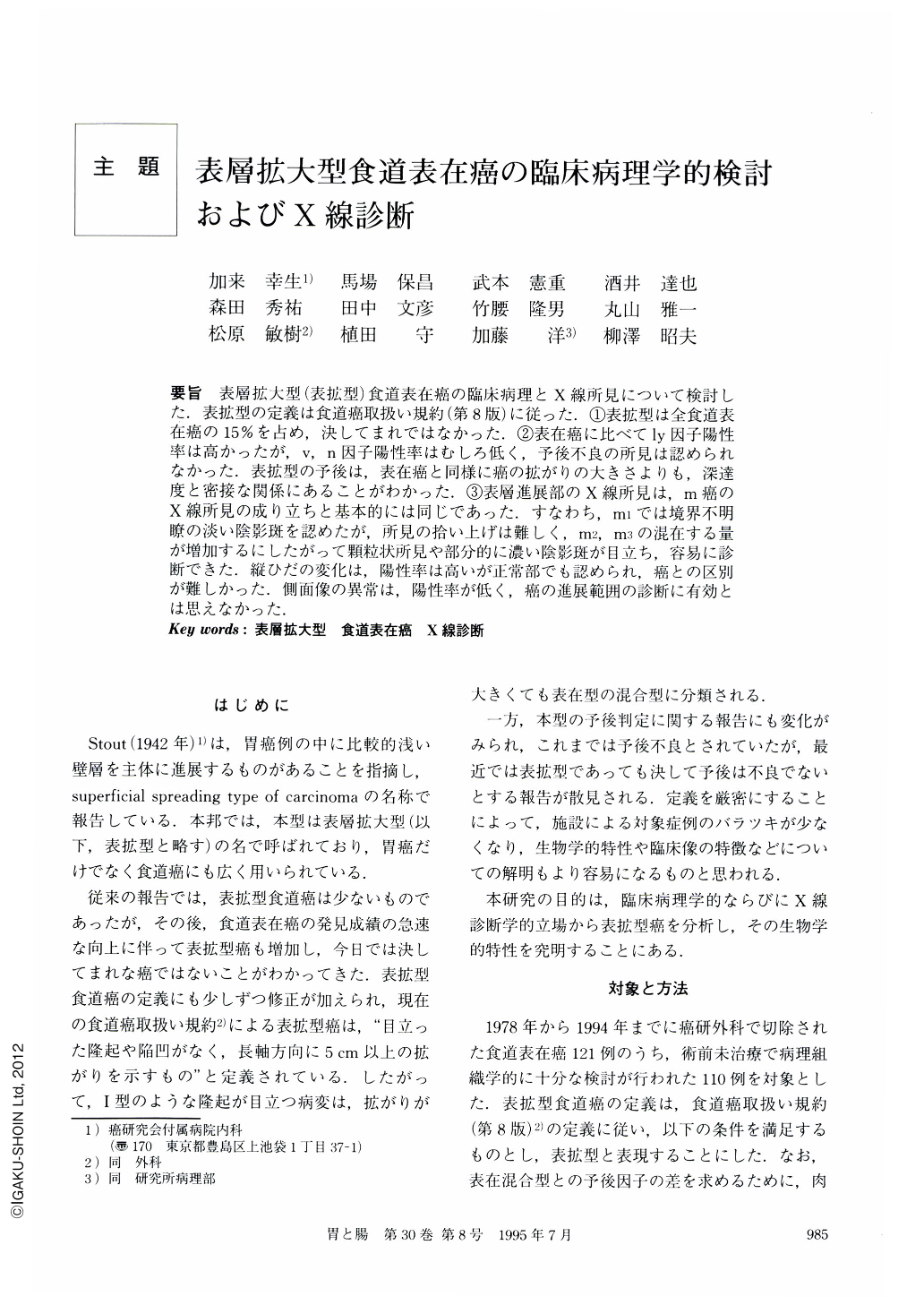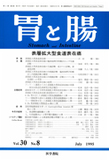Japanese
English
- 有料閲覧
- Abstract 文献概要
- 1ページ目 Look Inside
- サイト内被引用 Cited by
要旨 表層拡大型(表拡型)食道表在癌の臨床病理とX線所見について検討した.表拡型の定義は食道癌取扱い規約(第8版)に従った.①表拡型は全食道表在癌の15%を占め,決してまれではなかった.②表在癌に比べてly因子陽性率は高かったが,v,n因子陽性率はむしろ低く,予後不良の所見は認められなかった.表拡型の予後は,表在癌と同様に癌の拡がりの大きさよりも,深達度と密接な関係にあることがわかった.③表層進展部のX線所見は,m癌のX線所見の成り立ちと基本的には同じであった.すなわち,m1では境界不明瞭の淡い陰影斑を認めたが,所見の拾い上げは難しく,m2,m3の混在する量が増加するにしたがって顆粒状所見や部分的に濃い陰影斑が目立ち,容易に診断できた.縦ひだの変化は,陽性率は高いが正常部でも認められ,癌との区別が難しかった.側面像の異常は,陽性率が低く,癌の進展範囲の診断に有効とは思えなかった.
We evaluated clinical pathological and radiologic findings of the extensive superficial type esophageal cancer (ESEC). The extensive superficial type was defined by Guide Lines for the Clinical and Pathologic Studies on Carcinoma of the Esophagus (8th ed).
1) There were no difference in the median age, sexual ratio and location of the lesion between the ESEC and the superficial type esophageal cancer, but asymptomatic patients and patients found by endoscopic examinations were more common in the ESEC group.
2) The ESEC occupied 15% of the superficial type and therefore the ESEC was not a rare disease.
3) The ESEC had higher positive rate of 1y factor than the superficial type, but lower positive rates of and n factors. Therefore the ESEC dial not have indicators for poor prognosis. The prognosis of both ESEC and superficial type depended on the depth of invasion rather than the superficial extension of invasion.
4) The distance of superficial extension was defined as the distance between the edge of invasion and the deepest invasion point. Fifty seven perfect of the ESEC had symmetrical extension towards oral and anal direction, and 29% of the ESEC had anal-direction predominant extension. Only 6% of the ESEC accompanied extensive ly (+) invasion.
5) Radiologic findings of the ESEC were basically the same as those of mucosal cancer. A m1 case had an ill defined pale shadow which was very difficult to detect. As the amount of m2 and m3 components increased, granular findings and partially dense plaque shadows became more prominent and made a diagnosis easily. The changes of longitudinal folds were frequently seen, but these changes might be found in the normal area and were not specific to cancer. The lateral view did not frequently disclose abnormal findings and did not seem to cotribute the diagnosis of extension of cancerous invasion.

Copyright © 1995, Igaku-Shoin Ltd. All rights reserved.


